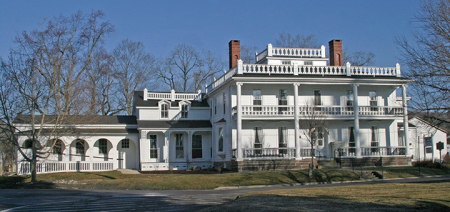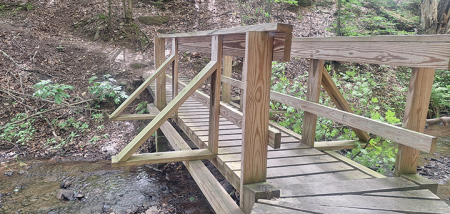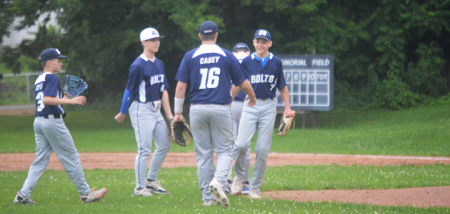Off The Map: Hitting The Wall
Published:
September 23rd, 2013
By:
Bryan Snyder

Editor’s Note: After a year's hiatus, the chronicle of Bryan Snyder's misadventures in the Western high country, "Off The Map", returns to the pages of The Evening Sun. Besides the usual tales of Rocky Mountain mischief, Bryan will report from the drought-afflicted backcountry of Southern California and the snow-capped, slumbering volcanoes of the Pacific Northwest.
Bryan Snyder
Correspondent
Wedging my body into the Great Cleft was proving more difficult than I expected. The confines were so narrow that I was scraping elbows on both sides, and the hiking poles tied to my pack were getting caught on every chink and crevice. I was beginning to reconsider my route, but my hiking book said this was the best path to the summit ridge, so I carefully retreated in order to streamline my figure before I became permanently jammed in there.
The Great Cleft was a secret passage through a hundred-foot cliff face on the side of Pollock Mountain in Glacier National Park. The route was not for the faint of heart; its main defense strategy was to cause hikers to become overbalanced while climbing up the steep crack, causing them to fall backwards, which I imagine would feel like tumbling down a stone staircase. To slim down, I emptied my pockets and stuffed my camera, sunglasses and hiking poles in my backpack. Then I approached the break in the cliffs once more.
This time, I didn’t feel quite as much like a coyote trying to squeeze through a rabbit hole. To reach the top of the Great Cleft, I had to find handholds along the sides of the fissure and lift my body before I could take a forward, uphill step. By keeping three limbs in contact with the rock walls at all times, I managed to squeeze my way up the full length of the crack without losing my grip and getting spat back out again. I wasn’t looking forward to revisiting this obstacle on the return journey, but from here, the summit of Pollock Mountain was unguarded, and I stepped forth to claim my just rewards.
The views were extraordinary, for Pollock held a commanding position atop both the Continental Divide and the arête known as the Garden Wall. The Wall was a mammoth spine of rock twenty miles long, chiseled by glaciers to a fine edge. Three thousand feet below my perch on Pollock Mountain, tourists walked the Highline Trail that clung stubbornly to the side of the Garden Wall. The valley floor lay an additional three thousand feet below them and absorbed their attentions. Occasionally they craned their necks and looked up at the seemingly unreachable pinnacles along the Wall, just as I had done for years. I had believed those peaks to be off-limits as well. But now that I had defied my previous convictions, I was ready to tackle the next tower along the Garden Wall – an isolated and unusually-shaped feature called Bishops Cap.
The Cap was less of a mountain and more of a pile of rocks that jutted from the top of the arête, pointing up to the sky. It resembled a small fortress or, from some angles, a piece of clerical headgear. The location was extremely isolated, and my book had ominous words to say about the crux of the climb, but I was reassured by the knowledge that I would soon have company, for earlier I had passed a group of six college students intent on the same destination.
Scrambling along the Continental Divide to the base of the fortress was a straightforward hike. Cairns stacked by previous climbers helped guide me up the first few ledges of Bishops Cap. But then I reached a twelve-foot wall that puzzled me for a minute. A cairn sat immediately atop it, even though the route seemed to be beyond most hikers’ skill level. “This is not a difficult section to climb,” said my book. I looked at the wall, then looked at the pictures on the page, then looked back at the wall again. You’ve got to be kidding me.
I had to sit down and spend ten minutes just gathering my courage. If I wasn’t alone, I’d feel a lot better about risking my life this far away from civilization. I wished those college kids would hurry and get themselves over here; I’d seen them standing atop the summit of Pollock and walking down the ridge to get a view of Bishops Cap not long ago. But now I scanned the top of the Garden Wall and could see no sign of the students. Blast it… they’ve turned around! There goes my lifeline. Apparently, the Great Cleft had been adventurous enough for the six of them.
I left my pack behind so I’d have greater flexibility and returned to the wall. This was worse than the Cleft. If I fell, my momentum would carry me down several ledges, which might not be fatal but was likely to be bone-shattering. I took some calming breaths and managed to clear the hurdle by clinging to the cliff, ascending diagonally and hoping the thin handholds I was grabbing weren’t as loose as they actually felt.
I continued up the tower with some trepidation, because what the book described as the most difficult section of the hike still lay ahead. The pitch of the mountain steepened further, and my anxiety grew with every wall that the mountain chose to throw against me.
At last, I reached the crux of this ordeal. It was another cleft in the rock, eight feet high, but his one had to be negotiated less like a staircase and more like a chimney. All I had to do was wedge myself in there and climb straight up.
I eyeballed the shadowy crack, looking for hidden dangers. This is the crux? It paled in comparison to the sketchy scramble I’d done earlier. The confined space offered protection, and was far more comforting than having empty air at my back. I squeezed inside, and with my long arms, I searched out a handhold at the lip of the chimney and easily pulled myself to the top. Guess you can’t believe everything you read.
The summit was now mine. From the narrow roof of the stone fortress’ highest tower, the whole of Glacier National Park lay before me. The other mountains looked like animals in a zoo of sheer-sided monstrosities, slinking through a sea of open tundra. I had no appetite for tangling with any more of those sharp-toothed peaks today.
When considering my descent, I realized that I’d had enough of clefts, too. So instead of returning to Pollock Mountain and the Great Cleft, I chose a route that had no pictures or maps and was only cursorily described in the book. After surrendering the Bishops Cap, I slid down the side of the Garden Wall and surprised some hikers on the Highline Trail by appearing to materialize out of nowhere. If I’d told them where I’d been, I don’t think they would have believed me, and twenty years ago when I first came to the park, I wouldn’t have believed me either. But with age comes wisdom… or at least a knack for finding secret passages.
Bryan is a 1991 Norwich High School graduate and author of "Off The Map: Fifty-five Adventures in the Great American Wilderness and Beyond", now available at Amazon.com. For additional photos, visit www.facebook.com/offthemaponline.
Author: Bryan Snyder - More From This Author
Comments











